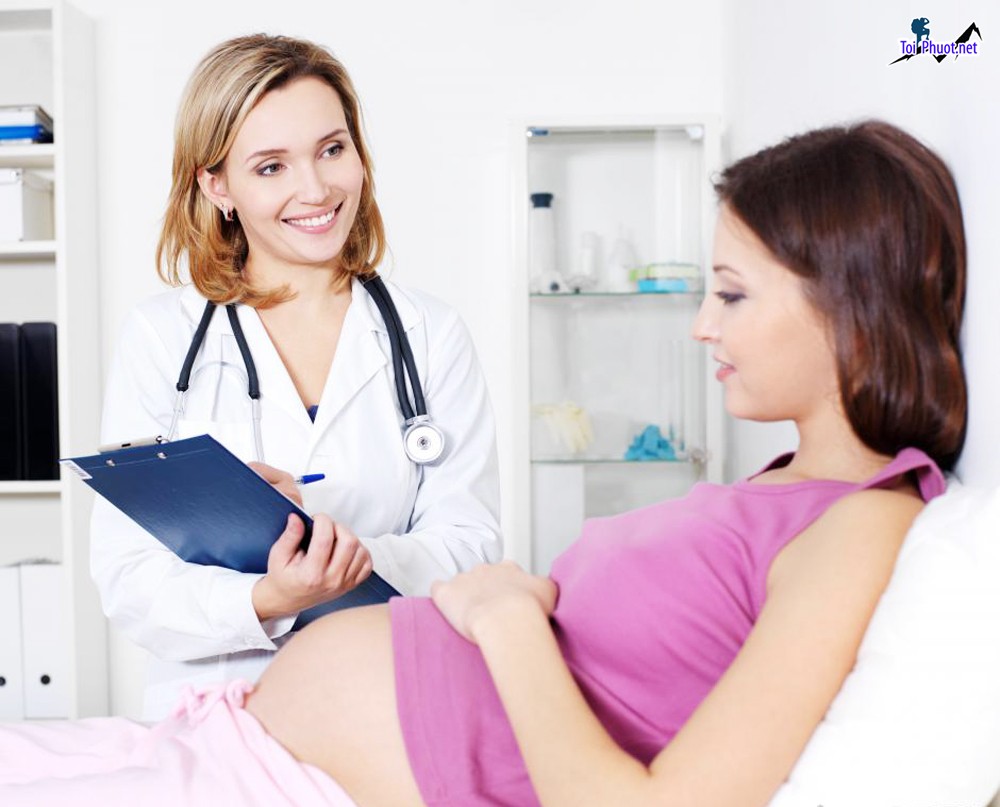
Is health insurance used when giving birth? and the benefits it brings in the US For female workers, maternity benefits are among the most important concerns during pregnancy and childbirth. To fully enjoy their rights in accordance with the law, female employees need to understand and be well-informed about Health Insurance (BHYT) and Social Insurance (BHXH).
I. Benefits When Participating in Health Insurance (BHYT): Applicable only if the mother is enrolled in BHYT
Is health insurance used when giving birth? and the benefits it brings in the US
Giving birth at a designated healthcare facility (in-network)
The benefits depend on the individual’s BHYT card classification, specifically:
Category 1: 100% of childbirth costs within the BHYT coverage scope are reimbursed without any payment ratio limits.
Category 2: 100% of childbirth costs within BHYT coverage are reimbursed (with some limits on payment ratios for certain drugs, chemicals, medical supplies, and technical services); transportation costs from district-level to higher-level facilities in emergency cases or inpatient referrals are also covered.
Category 3: 95% of childbirth costs within BHYT coverage (with certain payment limits as above); 100% coverage if childbirth occurs at commune-level facilities and total costs are less than 15% of the basic monthly salary.
Category 4: 80% of childbirth costs within BHYT coverage (with some limits); 100% coverage if childbirth occurs at commune-level facilities.
Category 5: 100% of childbirth costs, including expenses outside BHYT coverage and transportation costs.
Giving birth at a non-designated healthcare facility (out-of-network)
Payments will be made at the following rates, based on the in-network benefits above:
Central-level hospitals: 40% of inpatient treatment costs
Provincial-level hospitals: 60% of inpatient treatment costs
District-level hospitals: 100% of total childbirth costs
II. Benefits When Participating in Compulsory Social Insurance (BHXH)
Case where only the mother participates in BHXH
If the mother has contributed to BHXH for at least 6 months within 12 months prior to childbirth, she is entitled to:
One-time childbirth allowance: The allowance equals the number of children multiplied by two times the basic salary at the month of birth.
Maternity leave:
A total of 6 months off work before and after childbirth. In case of twins or more, the mother receives an additional 1 month per child starting from the second child. The maximum leave before childbirth is 2 months.
The maternity benefit equals 100% of the average monthly salary used for social insurance contributions over the 6 months prior to maternity leave.
For mothers who have contributed for 12 months or more, if prescribed bed rest by a qualified medical facility during pregnancy, the required minimum contribution is 3 months within the 12 months before childbirth.
Health recovery after maternity: Female workers who return to work but have not fully recovered within 30 days after maternity leave may be granted 5 to 10 days of additional recovery leave (including holidays and weekends). The number of days is decided by the employer and the workplace’s labor union, or by the employer if no union exists.
Up to 10 days for mothers who give birth to two or more children at once.
Up to 7 days for mothers who deliver via surgery.
Up to 5 days for other cases.
Case where only the father participates in BHXH
If the father has contributed to BHXH for at least 6 months in the 12 months before childbirth, he is entitled to:
Is health insurance used when giving birth? and the benefits it brings in the US
One-time childbirth allowance (same as the mother).
Paternity leave:
5 working days if the wife has a natural birth.
7 working days if the wife has a surgical birth or delivers prematurely before 32 weeks.
10 working days for twins; for triplets or more, an additional 3 days per child.
14 working days if twins or more are delivered by surgery.
This leave must be taken within 30 days from the wife’s childbirth.
If the father has contributed less than 6 months at the time of birth, he may still take paternity leave as above but will not receive the one-time allowance.
Case where both parents participate in BHXH
The mother receives maternity benefits as described in Section 1 above, and the father is entitled to paternity leave as described in Section 2.
Complications related to pregnancy
In cases of miscarriage, abortion, stillbirth, or medically indicated termination, female workers are entitled to maternity leave as prescribed by qualified medical institutions. Maximum leave periods are as follows:
10 days for pregnancy under 5 weeks.
20 days for pregnancy between 5 and less than 13 weeks.
40 days for pregnancy between 13 and less than 25 weeks.
50 days for pregnancy at 25 weeks or more.
These leave days include holidays, Tet (Lunar New Year), and weekends.
Is health insurance used when giving birth? and the benefits it brings in the US
If both parents participate in BHXH and the mother dies after childbirth, the father is entitled to the remaining maternity leave. The benefit is calculated based on the father’s average social insurance salary contribution over the 6 months before leave. If the father has contributed for less than 6 months, the benefit is calculated based on the average salary of the months contributed.
The above summarizes some key maternity benefits for insured workers when giving birth. Cases involving surrogate pregnancy, adoption, and others can refer to the Social Insurance Law and relevant guiding documents for more details.
Nguồn tin: ksbtdanang. vn
Những tin mới hơn
Những tin cũ hơn
 Cho Thuê Lều Du Lịch Giá Rẻ Ở Tại Phú Yên
Cho Thuê Lều Du Lịch Giá Rẻ Ở Tại Phú Yên
![[Flycam] Núi Đá Bia, điểm du lịch sinh thái ở Phú Yên](/assets/news/2016_10/nui-da-bia-diem-du-lich-sinh-thai-o-phu-yen13.jpg) [Flycam] Núi Đá Bia, điểm du lịch sinh thái ở Phú Yên
[Flycam] Núi Đá Bia, điểm du lịch sinh thái ở Phú Yên
 Ngẩn Ngơ Vẻ Đẹp Tinh Khôi Của Hot Girl Tú Linh Khi Diện Áo Cưới
Ngẩn Ngơ Vẻ Đẹp Tinh Khôi Của Hot Girl Tú Linh Khi Diện Áo Cưới
 Cho thuê loa kẹo kéo vali du lịch giá rẻ tại Tuy Hòa - Phú Yên
Cho thuê loa kẹo kéo vali du lịch giá rẻ tại Tuy Hòa - Phú Yên
 Spa ở tại Tuy Hòa Phú Yên bạn nên chọn để làm đẹp và chăm sóc da
Spa ở tại Tuy Hòa Phú Yên bạn nên chọn để làm đẹp và chăm sóc da
 Địa Điểm Chụp Ảnh Cưới Đẹp Ở Phú Yên
Địa Điểm Chụp Ảnh Cưới Đẹp Ở Phú Yên
 Thuê Xe Máy Tuy Hòa - Thuê Xe Máy Phú Yên Giá Rẻ
Thuê Xe Máy Tuy Hòa - Thuê Xe Máy Phú Yên Giá Rẻ
 Cây hoa đào, mai, liễu đèn led, thanh lý giá rẻ toàn quốc
Cây hoa đào, mai, liễu đèn led, thanh lý giá rẻ toàn quốc
 Áo cưới Phú Yên Sang Trọng Quyến Rũ
Áo cưới Phú Yên Sang Trọng Quyến Rũ
 Suối nước khoáng Phú Sen, điểm du lịch nghĩ dưỡng ở Phú Yên
Suối nước khoáng Phú Sen, điểm du lịch nghĩ dưỡng ở Phú Yên
 Top 9 Shop giày nữ đẹp được yêu thích nhất Hà Nội đa dạng loại mẫu
Top 9 Shop giày nữ đẹp được yêu thích nhất Hà Nội đa dạng loại mẫu
 Top 13 Shop giày nữ đẹp được yêu thích nhất Đà Nẵng tại đây
Top 13 Shop giày nữ đẹp được yêu thích nhất Đà Nẵng tại đây
 Top 10 Nhà sách lớn nhất Sài Gòn Hồ Chí Minh với những kiến thức cực hay
Top 10 Nhà sách lớn nhất Sài Gòn Hồ Chí Minh với những kiến thức cực hay
 Top 8 Nhà sách lớn nhất Hải Phòng giá rẻ và nhiều ưu đãi
Top 8 Nhà sách lớn nhất Hải Phòng giá rẻ và nhiều ưu đãi
 Top 8 Nhà sách lớn nhất Hà Nội được đánh giá cao nhất
Top 8 Nhà sách lớn nhất Hà Nội được đánh giá cao nhất